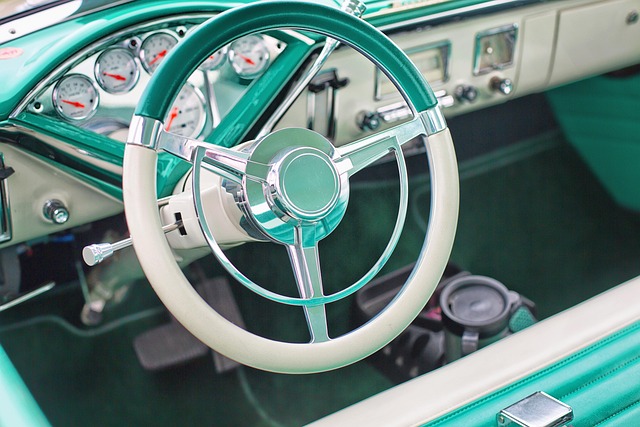Looking to register your car in California? This comprehensive guide walks you through every step, from understanding eligibility requirements to completing the DMV application process. Learn about essential documents needed and how to conduct or schedule a crucial dmv vin verification. By following these clear instructions, you’ll be on your way to securing your vehicle’s registration smoothly and efficiently.
- Understand Eligibility Requirements for Car Registration in California
- Gather Necessary Documents for Your Vehicle
- Visit Your Local DMV and Complete Application Process
- Conduct or Schedule VIN Verification for Your Car
- Pay Registration Fees and Receive Your Registration Papers
Understand Eligibility Requirements for Car Registration in California

Before registering your car in California, it’s crucial to understand the eligibility requirements set by the Department of Motor Vehicles (DMV). One critical step is ensuring that your vehicle meets all safety and emissions standards for the current year. The DMV conducts a Vehicle Identification Number (VIN) verification process to check these criteria, which includes checking the VIN inspection and verifying the vehicle’s history.
Additionally, you’ll need to have a valid driver’s license and proof of insurance. If you’re importing a car or it’s a new model, certain documentation and inspections might be required. For instance, mobile vin verification services can facilitate this process by providing on-site VIN inspection, ensuring convenience and swiftness, especially for those who prefer not to visit a DMV office.
Gather Necessary Documents for Your Vehicle

Before you start the registration process for your car in California, make sure to gather all the essential documents related to your vehicle. This includes your vehicle’s registration certificate from the previous state (if applicable), proof of insurance, and a valid driver’s license. Additionally, the California Department of Motor Vehicles (DMV) requires a Vehicle Identification Number (VIN) verification, which can be done through a mobile vin inspection or an official vin inspection.
Ensure that your vehicle meets all safety standards and has a current emissions test report. All these documents play a crucial role in the registration process as they verify your ownership and ensure your car complies with California’s regulations. A DMV vin verification is a straightforward process, but having your documents organized beforehand will help streamline the entire registration procedure.
Visit Your Local DMV and Complete Application Process

To register your car in California, the first step is to visit your local Department of Motor Vehicles (DMV) office. Bring all necessary documents, including proof of ownership, vehicle identification number (VIN), and any other required paperwork. The DMV will guide you through the application process, which involves filling out forms and providing essential details about your vehicle.
One crucial aspect of this process is the VIN verification. You can facilitate this with a mobile vin verifier to ensure accuracy and save time. Some DMVs might also offer this service on-site for convenience. During the inspection, an official will cross-reference your VIN with state records to confirm the vehicle’s history and ensure it meets all safety standards before approving the registration.
Conduct or Schedule VIN Verification for Your Car
To register your car in California, conducting or scheduling a Vehicle Identification Number (VIN) verification is a crucial step. This process ensures that your vehicle meets all necessary safety and environmental standards before it can be licensed. The Department of Motor Vehicles (DMV) recommends having this verification done by a professional mobile vin verifier to ensure accuracy and save you time.
A mobile vin inspection or verification service will come to your location, whether it’s your home or office, to perform a thorough check using specialized equipment. They’ll compare your car’s VIN with the manufacturer’s records to confirm its authenticity, history, and compliance with California’s requirements. Once completed, you can use this report as part of the registration process at your local DMV office.
Pay Registration Fees and Receive Your Registration Papers

After completing the registration process online or at a DMV office, the next step is to pay the required registration fees. These fees vary based on your vehicle’s type and age. Once the payment is processed, you will receive your registration papers, also known as the Certificate of Registration. This document is essential as it verifies your car’s ownership and insures it in the state of California.
The DMV vin verification process can be conveniently completed online or by scheduling an appointment at a local DMV office. For added convenience, some services offer mobile vin verification options with a mobile vin verifier, allowing you to complete this step from the comfort of your home or on the go. Ensure that all documents are accurate and up-to-date for a smooth registration experience.
Registering a car in California involves understanding eligibility requirements, gathering essential documents, visiting your local DMV, completing an application process, conducting or scheduling a dmv vin verification, and paying registration fees. By following these steps diligently, you can ensure a smooth process for getting your vehicle on California’s roads legally. Remember to keep all necessary papers handy for future reference and compliance checks.
